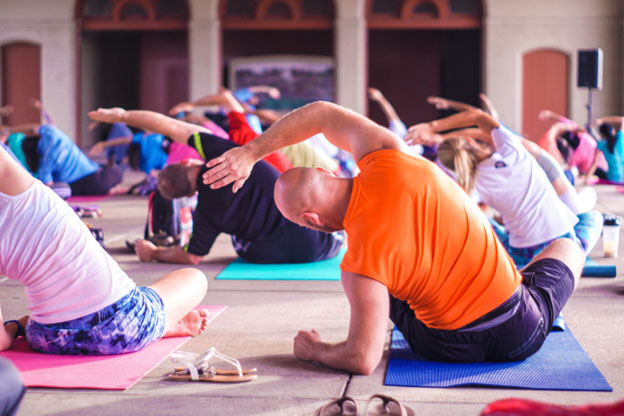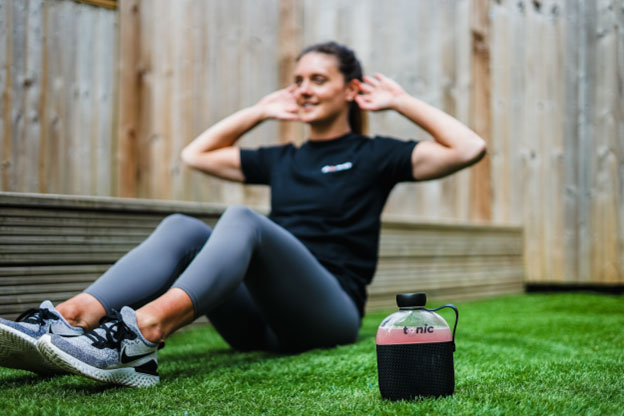Hip impingement is a common condition that can cause pain, loss of motion, and disability if left untreated. Through proper exercises, it is possible to reduce symptoms associated with hip impingement, while improving strength and flexibility in the hip joint. Exercises used to treat hip impingement may include stretching, strengthening, and range of motion exercises. This article will explain the importance of hip impingement exercises and provide examples of exercises that can help treat this condition.

Understanding Hip Impingement
Hip impingement, also known as femoroacetabular impingement, is a condition that occurs when there is abnormal contact between the bones in the hip joint. This contact can cause deformities in the bone, which can lead to pain, stiffness, and reduced range of motion in the hip.
Causes and Risk Factors:
Hip impingement is most often caused by a combination of genetic and environmental factors. Some people are born with abnormal hip anatomy, such as a misshapen femoral head or a shallow socket in the hip. Others may develop the condition due to activities that put repetitive stress on the hip joint, such as high-impact sports or dance.
Symptoms and Diagnosis:
The most common symptom of hip impingement is pain in the hip region. This pain can be felt in the front of the hip, groin, or back of the hip, and may worsen with daily activities such as walking or sitting for long periods of time. Other symptoms may include stiffness, a limited range of motion, and a clicking or snapping sensation in the hip joint.
To diagnose hip impingement, a doctor will perform a physical examination and may order imaging tests such as X-rays or MRI scans. These tests can help to identify any deformities in the hip joint or signs of damage to the surrounding tissues.
Stretching and Mobilization Exercises
Stretching and mobilization exercises are essential components of any effective treatment plan for hip impingement. These exercises help to improve the flexibility and range of motion of the hip joint, which can reduce pain, stiffness, and other symptoms associated with hip impingement.
Hip Flexor Stretch
Technique and Key Points:
1. Kneel down on the floor with one knee on the ground and the other leg extended straight behind you.
2. Ensure that your torso is upright and your core is engaged.
3. Slowly lean forward until you feel a stretch in the front of your hip and thigh.
4. Hold the stretch for 20-30 seconds, then release.
5. Repeat the stretch on the other side.
Repetitions and Frequency:
Perform the Hip Flexor stretch 2-3 times on each side, every day. Gradually increase the duration of the stretch as you become more comfortable with it.

Remember to avoid any movements or stretches that cause pain or discomfort and listen to your body while performing the stretch. With regular practice, Hip Flexor stretch can help reduce hip impingement pain and improve hip joint flexibility.
Piriformis Stretch
Technique and Key Points:
1. Start by lying on your back with both knees bent and feet flat on the ground.
2. Cross one ankle over the opposite knee.
3. Use your hands to pull your thigh towards your chest until you feel a stretch in your glute/hip region.
4. Hold the stretch for 20-30 seconds, then release.
5. Repeat the stretch on the other side.
Repetitions and Frequency:
Perform the Piriformis stretch 2-3 times on each side, every day. Gradually increase the duration of the stretch as you become more comfortable with it.
This stretch can help alleviate tightness and discomfort in the piriformis muscle, which is a common cause of hip and groin pain. Performing this stretch regularly can improve your hip mobility and reduce the risk of hip impingement symptoms. However, if you are experiencing chronic hip pain, it is important to consult with your healthcare provider for an accurate diagnosis and personalized treatment plan.
External Rotation Stretch
Technique and Key Points:
1. Start by lying on your back with both knees bent and feet flat on the ground.
2. Slowly bring one knee up towards your chest, holding it with your hands.
3. Then, rotate your leg outwards, keeping the ankle and foot close to your opposite knee.
4. Use your hands to provide gentle pressure toward the ground until you feel a stretch in your hip.
5. Hold the stretch for 20-30 seconds, then release and repeat on the other side.
6. Remember to breathe throughout the stretch and avoid any sudden or jerky movements.
Repetitions and Frequency:
Perform the External Rotation Stretch 2-3 times on each side, every day. Gradually increase the duration of the stretch and the amount of pressure applied as you become more comfortable with it. This exercise can be a helpful addition to a hip impingement physical therapy regimen or daily activity modifications aimed at reducing hip impingement pain and improving the hip range of motion.
Strengthening Exercises for Hip Stability
One of the most common reasons for hip impingement is a lack of hip stability. This means that the muscles that surround the hip joint are not strong enough to properly support the joint during daily activities or exercise. Strengthening exercises can be an effective way to address hip instability and reduce the risk of hip impingement.

Clamshell Exercise
Technique and Key Points:
1. Lie down on your side with your legs together and knees bent to a 90-degree angle.
2. Rest your head on your lower arm while your upper arm can be resting on your hip or placed on the floor in front of you for support.
3. Keeping your feet together, raise your top knee as high as you can without allowing your pelvis to roll back or forward.
4. Pause for a second at the top of the movement, then slowly lower your knee back down.
5. Make sure to keep your hips and lower leg still throughout the exercise, as only the top leg should be moving.
6. Do not let your feet come apart or touch during the exercise.
Repetitions and Frequency:
Perform 10-15 repetitions on each side for 2-3 sets, resting for 20-30 seconds between sets. Incorporate this exercise 2-3 times a week into your hip impingement exercise routine for the best results.
Bridge Exercise
Technique and Key Points:
1. Lie on your back with your knees bent and feet flat on the ground. Place your arms by your sides with your palms facing down.
2. Engage your glutes and core muscles, and lift your hips off the ground until your body forms a straight line from your shoulders to your hips.
3. Hold this position for a second or two, squeezing your glutes at the top of the movement.
4. Slowly lower your hips back down to the ground, keeping control throughout the movement.
5. Avoid pushing through your lower back or letting your knees splay out to the sides.
6. Keep your core engaged throughout the exercise and maintain a neutral spine position.
Repetitions and Frequency:
Perform 10-15 repetitions for 2-3 sets, resting for 20-30 seconds between sets. Do this exercise 2-3 times per week as part of your hip impingement exercise routine to improve strength and flexibility in your hip muscles.
Side-Lying Hip Abduction
Hip Abduction is an effective exercise for strengthening the hip muscles and improving hip stability. Here's how to perform this exercise with proper technique and key points to focus on:
Technique and Key Points
1. Lie sideways and extend the lower arm straight out from your body and your top hand resting on your hip.
2. Keep your legs straight, with your lower leg on the ground and the top leg resting on your bottom leg.
3. Engage your core muscles and lift your top leg up toward the ceiling, keeping it straight and maintaining a neutral spine position.
4. Lift your leg to the point where you feel the tension in your hip, but avoid lifting it too high or letting it drop down too low.
5. Pause briefly at the top of the movement before slowly lowering your leg back down to the starting position.
6. Repeat for the desired number of repetitions before switching sides and repeating the exercise with your other leg.
Key Points:
- Avoid rolling your body forward or backward during the exercise. Your torso should remain stable and still.
- Use controlled movements and avoid jerking or swinging your leg.
- Focus on engaging your glutes and outer hip muscles throughout the exercise.
- Breathe in as you lift your leg up and exhale as you lower it back down.
Repetitions and Frequency:
Perform 10-15 repetitions on each side for 2-3 sets, resting for 20-30 seconds between sets. Include this exercise in your hip impingement exercise routine 2-3 times per week to improve hip strength and stability.
Low-Impact Cardiovascular Exercises
Low-impact cardiovascular exercises are a type of workout that can get your heart pumping and your blood flowing without placing excessive stress on your joints. These types of exercises can be especially beneficial for individuals who have joint pain, are recovering from an injury, or are simply looking for a low-impact workout option to supplement their current routine.

Stationary Cycling
Stationary cycling is a popular low-impact cardiovascular exercise that can be done in the comfort of your own home or at the gym. Here are some instructions on how to perform stationary cycling effectively:
Technique and Key Points:
1. Adjust the bike height to your size: Adjust the seat height and all other elements to suit your body size and ensure proper form while cycling. When in a seated position with feet on the pedals, your knees should be slightly bent at the bottom of each pedal stroke.
2. Proper Posture: Sit up straight with your shoulders relaxed and your core engaged. Keep your feet flat on the pedals and your knees pointing forward.
3. Choose the right resistance: Start with a low resistance and gradually increase it as you warm up. Aim for a moderate intensity level by increasing your speed or resistance.
4. Control your breathing: Inhale through your nose and exhale through your mouth, taking deep breaths at a comfortable pace.
Duration and Intensity:
The duration and intensity of your stationary cycling workout will vary depending on your fitness level and goals. As a general guideline, aim for 20-30 minutes of continuous cycling at a moderate intensity level, 3-5 times per week. As you progress, you can increase the duration or resistance level to continue challenging your body.
Water Aerobics
Technique and Key Points:
1. Start with a warm-up: Begin your water aerobics session by doing some gentle warm-up exercises, such as walking or jogging in the water. This helps to increase blood circulation to your muscles and prepare your body for a more intense workout.
2. Maintain proper form: Proper form is essential in water aerobics to minimize the risk of injury and ensure that you get the most out of your workout. Keep your back straight, shoulders relaxed, and core engaged throughout the exercises. Use smooth and controlled movements, avoiding jerky or sudden movements.
3. Use water resistance: The water provides natural resistance, making water aerobics a great low-impact workout. Use this resistance to your advantage by performing exercises that work your target muscles, such as leg lifts, arm curls, and jumping jacks.
4. Incorporate variety: To keep your water aerobics workout fun and engaging, incorporate a variety of exercises that work with different muscle groups. You can also try using equipment such as water dumbbells, noodles, or kickboards to add an extra dimension to your workout.

Duration and Intensity:
The duration and intensity of your water aerobics workout will depend on your fitness level and goals. As a general guideline, aim for a 30-45 minute workout, 3-5 times per week. You can also adjust the intensity of your workout by increasing or decreasing your speed, resistance, or range of motion. As you become more proficient in water aerobics, you can try adding more challenging exercises to your routine to continue challenging your body.
Elliptical Training
Technique and Key Points
Elliptical training is a popular low-impact workout option that provides a full-body workout while putting minimal stress on your joints. Here are some key tips to keep in mind to ensure that you are getting the most out of your elliptical workout:
1. Proper Posture: Maintain proper posture throughout your workout by keeping your shoulders relaxed and your back straight. Look straight ahead and avoid hunching over or leaning forward.
2. Engage Your Core: Use your abdominal muscles to stabilize and support your body throughout your stride. This will help maintain proper posture and maximize your workout benefits.
3. Focus on Your Stride: Make sure that you are pushing off from your heel and driving through your midfoot to efficiently engage your leg muscles. Keep your strides smooth and controlled.
4. Adjust the Resistance: To increase the intensity of your workout, adjust the resistance level on the elliptical. This can be done by turning a dial or pressing a button on the machine.
5. Incorporate Variety: To keep your elliptical workout engaging and avoid monotony, incorporate a variety of resistance levels, inclines, and stride lengths. You can also try using the moving handlebars to work your upper body.
6. Pay Attention to Breathing: Focus on breathing regularly throughout your workout. Inhale deeply through your nose and exhale through your mouth. This can help maximize oxygen intake and improve your workout performance.
Duration and Intensity:
The duration and intensity of your elliptical workout can depend on your fitness level and goals. Here are some general guidelines to consider:
- Beginners: Start with 10-15 minutes of low-intensity elliptical workout and gradually increase the duration and intensity over time.
- Intermediate: Aim for 30-45 minutes of elliptical training at moderate intensity, with occasional periods of high-intensity intervals.
- Advanced: Try incorporating high-intensity interval training (HIIT) into your elliptical workout regimen, with periods of all-out effort followed by short periods of rest. Aim for a total workout duration of 45-60 minutes.
Conclusion: Relieve Hip Pain and Regain Mobility with Targeted Exercise
Hip impingement or femoroacetabular impingement (FAI) can be a debilitating condition that affects your ability to perform daily activities and participate in physical activities. The triad of symptoms associated with hip impingement includes groin pain, limited range of motion, and hip pain. However, with the right treatment, you can relieve your hip pain and regain mobility.

Targeted exercises can be an effective non-surgical option for those suffering from hip impingement. By seeking conservative care and committing to a consistent exercise routine, you can alleviate hip pain and regain the mobility needed to perform daily activities and engage in the physical activities you enjoy. Talk to your doctor or physical therapist to determine which exercises are best for you and start taking steps towards managing your hip impingement today.
Frequently Asked Questions:
Can exercise alone cure hip impingement?
A: While exercise can effectively manage the symptoms of hip impingement, it may not fully cure it for everyone. In some cases, surgery may be necessary to address the underlying cause of the condition. However, for those who are able to effectively manage their symptoms with exercise, the benefits are numerous, including increased mobility and the ability to participate in physical activities that were once limited.
Are these exercises suitable for all ages?
A: Hip impingement exercises can be modified to suit individuals of different ages and fitness levels. However, it's important to consult a healthcare professional before beginning any exercise regimen, especially if you have pre-existing medical conditions or are recovering from surgery.
Should I consult a healthcare professional before starting these exercises?
A: Yes, it's highly recommended to consult with a healthcare professional before beginning any exercise regimen, especially if you have pre-existing medical conditions or have undergone surgery for hip impingement.
Can hip impingement exercises prevent the need for surgery?
A: In some cases, targeted exercises can help manage the symptoms of hip impingement and prevent the need for surgical intervention. However, not everyone may benefit from exercise alone, and surgery may be necessary to fully address the underlying cause of the condition.
How long does it take to see improvement with these exercises?
A: The timeline for improvement with hip impingement exercises can vary depending on the individual and the severity of their condition. However, with consistent and dedicated effort, improvement can be seen within a few weeks to a few months of starting an exercise regimen. It's important to continue these exercises as part of a daily routine to maintain the benefits and prevent a recurrence of symptoms.


